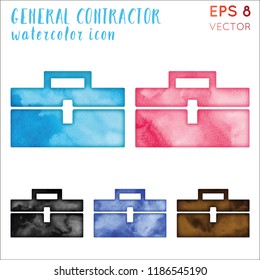Explore The Influence Of Seasonal Components On The Effectiveness Of Industrial External Paint And Determine The Optimum Times To Achieve Enduring Outcomes For Your Project
Explore The Influence Of Seasonal Components On The Effectiveness Of Industrial External Paint And Determine The Optimum Times To Achieve Enduring Outcomes For Your Project
Blog Article
Article Produced By-Leach Urquhart
When you're intending an industrial exterior paint job, seasonal factors can make or break your outcomes. https://andyjwivf.luwebs.com/35042922/increase-your-home-s-visual-appeal-the-advantages-of-utilizing-professional-house-painting-services 'll wish to consider just how temperature level and humidity impact paint application and drying times. Choosing the appropriate season can ensure your paint sticks properly and lasts much longer. But which periods are really the best for this sort of work? Let's discover the key elements that can affect your project's success.
The Impact of Temperature on Paint Application
When you're planning an industrial outside paint project, the temperature can significantly affect exactly how well the paint adheres and dries.
Preferably, you want to paint when temperature levels vary in between 50 ° F and 85 ° F. If it's too chilly, the paint may not treat effectively, causing issues like peeling off or splitting.
On the other side, if it's too warm, the paint can dry as well rapidly, protecting against proper adhesion and resulting in an uneven finish.
You ought to additionally take into consideration the time of day; early morning or late afternoon uses cooler temperatures, which can be a lot more beneficial.
Always inspect the maker's referrals for the particular paint you're utilizing, as they typically supply support on the excellent temperature range for optimum results.
Humidity and Its Impact on Drying Times
Temperature level isn't the only ecological aspect that influences your commercial outside paint job; moisture plays a substantial function also. High moisture levels can slow down drying out times drastically, impacting the total top quality of your paint job.
When the air is filled with dampness, the paint takes longer to heal, which can cause problems like poor adhesion and a greater risk of mildew development. If you're repainting on an especially moist day, be prepared for extended wait times in between coats.
It's vital to check local climate condition and plan appropriately. Preferably, go for humidity levels between 40% and 70% for optimum drying out.
Maintaining these consider mind guarantees your job stays on track and supplies a long-term coating.
Best Seasons for Commercial Exterior Paint Projects
What's the best season for your commercial exterior paint projects?
Springtime and early autumn are typically your best bets. During these periods, temperature levels are light, and humidity degrees are typically lower, producing optimal conditions for paint application and drying.
Stay clear of summer season's intense heat, which can trigger paint to dry also promptly, causing bad adhesion and finish. In a similar way, winter's cold temperatures can impede appropriate drying and treating, running the risk of the durability of your paint job.
Go for days with temperatures in between 50 ° F and 85 ° F for ideal results. Keep in read this to examine the neighborhood weather prediction for rainfall, as damp conditions can wreck your project.
Preparation around these factors ensures your paint job runs smoothly and lasts much longer.
Final thought
Finally, intending your industrial outside painting jobs around seasonal considerations can make a significant distinction in the outcome. By organizing work during the excellent temperature levels and humidity levels, you'll ensure far better adhesion and drying out times. Keep in mind to keep an eye on regional weather forecasts and pick the correct time of year-- spring and very early autumn are your best bets. Taking these steps will certainly help you achieve a sturdy and professional coating that lasts.
